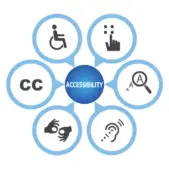When Quicken Loans transitioned away from legacy systems and revealed the first ever fully online mortgage lending service, “Rocket Mortgage,” there was, with good reason, a fair degree of doubt among consumers. The company’s slogan is curiously simple—press button, get mortgage. It can’t be that easy, can it?
But indeed, Rocket Mortgage had disrupted the FinTech industry. They designed a platform that offers fully digital end-to-end service on a website to simplify and speed up one of the most complex financial transactions most people will ever make.
Meanwhile, other banks struggled to play catch-up. Reliance on legacy systems and an unwillingness to invest in UX design led potential homeowners down the path of least resistance. They delivered them directly into the hands of the competition.
The failure of banks to invest in UX means they’re leaving millions of dollars on the table every year—not a wise decision on the part of institutions asking consumers to trust them with their hard-earned savings.

The Weight of Legacy Systems
Overhauling the large legacy systems that many traditional banks rely on is a significant challenge. Given the scale of this undertaking, C-suite executives and marketing teams often resort to quick fixes. They add or remove features to their system ad-hoc rather than pursuing a comprehensive overhaul.
Many decision-makers believe deploying new features won’t disrupt how users interact with other features in the same system. However, this is often not the case. Adding new features to a website without considering the entire system can create unexpected technical challenges. These challenges are often not apparent when evaluating the change in isolation.
Treating a new design element like a band-aid is also shortsighted from a personnel standpoint. Piecemeal integration of new features can disrupt the marketing team’s workflow as they constantly try to review and revise their strategies. Furthermore, IT personnel may become encumbered by requests that suspend their daily tasks to amend or troubleshoot problematic features.
Better UX Can Mean More Money
Considering the potential revenue, a bank’s failure to invest in UX is also fiscally irresponsible. It is not uncommon for banks to lose mortgages due to design flaws and not offering sufficient digital solutions.
According to the 2020 Borrower and Lender Insights Survey from ICE Mortgage Technology, 58% of lenders revealed that the availability of an online application would likely impact their decision. Our digital- and mobile-first culture has intensified five years down the line. Digital services are no longer a nice-to-have but a must-have for winning over consumers.
Deloitte research indicates that today’s most successful banks are focusing on improving the user experience and implementing new business models. The Digital Banking Maturity 2024 (DBM 2024) study reveals key trends in digital banking. One of the main trends identified is the development of digital mortgages, which were previously neglected due to their complexity.
Offering increased digital services related to mortgage loans aims to simplify and speed up the entire process from application through to loan management. Furthermore, banks are investing in automated investment advice and personal financial management (PFM) tools. These tools aim to assist customers in better managing their finances.
If banks want to retain customers and continue to increase revenue, decision makers must take a hard look at the experience they offer users—not just piece by piece, but as a whole entity.
Transforming Legacy Systems to Drive Customer Loyalty
The UX enhancement of legacy systems may take a little more time and investment up front. However, decision makers in the FinTech industry must remember that consumers are looking for a lifetime of wealth management at their fingertips. Banks that can provide seamless, user-friendly digital experiences will be the ones to earn the trust and loyalty of customers.
To successfully overhaul legacy systems and transform the user experience, partner with an experienced UX design agency like UpTop. Our team of experts can guide you through the discovery, design, and implementation process to ensure your legacy systems are modernized and optimized for your users. Connect with us to learn how we can help you overcome the challenges of legacy systems and deliver a best-in-class digital experience.


